The document outlines an exploration of enhancing MIT's OpenCourseWare (OCW) by restructuring and integrating course materials into more interactive learning platforms, emphasizing user engagement and adaptability. It discusses the goals and motivations of the MIT Office of Educational Innovation and Technology in improving accessibility and quality of online educational resources. The aim is to create a more effective open courseware experience that caters to diverse learning needs while facilitating collaboration among students and teachers.
![From OpenCourseWare to Open CourseWare Brandon Muramatsu, [email_address] MIT Office of Educational Innovation and Technology Citation: Muramatsu, B., (2010). From OpenCourseWare to Open CourseWare. Presented at OER’11: Manchester, UK, May 12, 2011. With a Space](https://image.slidesharecdn.com/oer11-opencourseware-muramatsu-final-110512045725-phpapp01/75/From-OpenCourseWare-to-Open-CourseWare-1-2048.jpg)
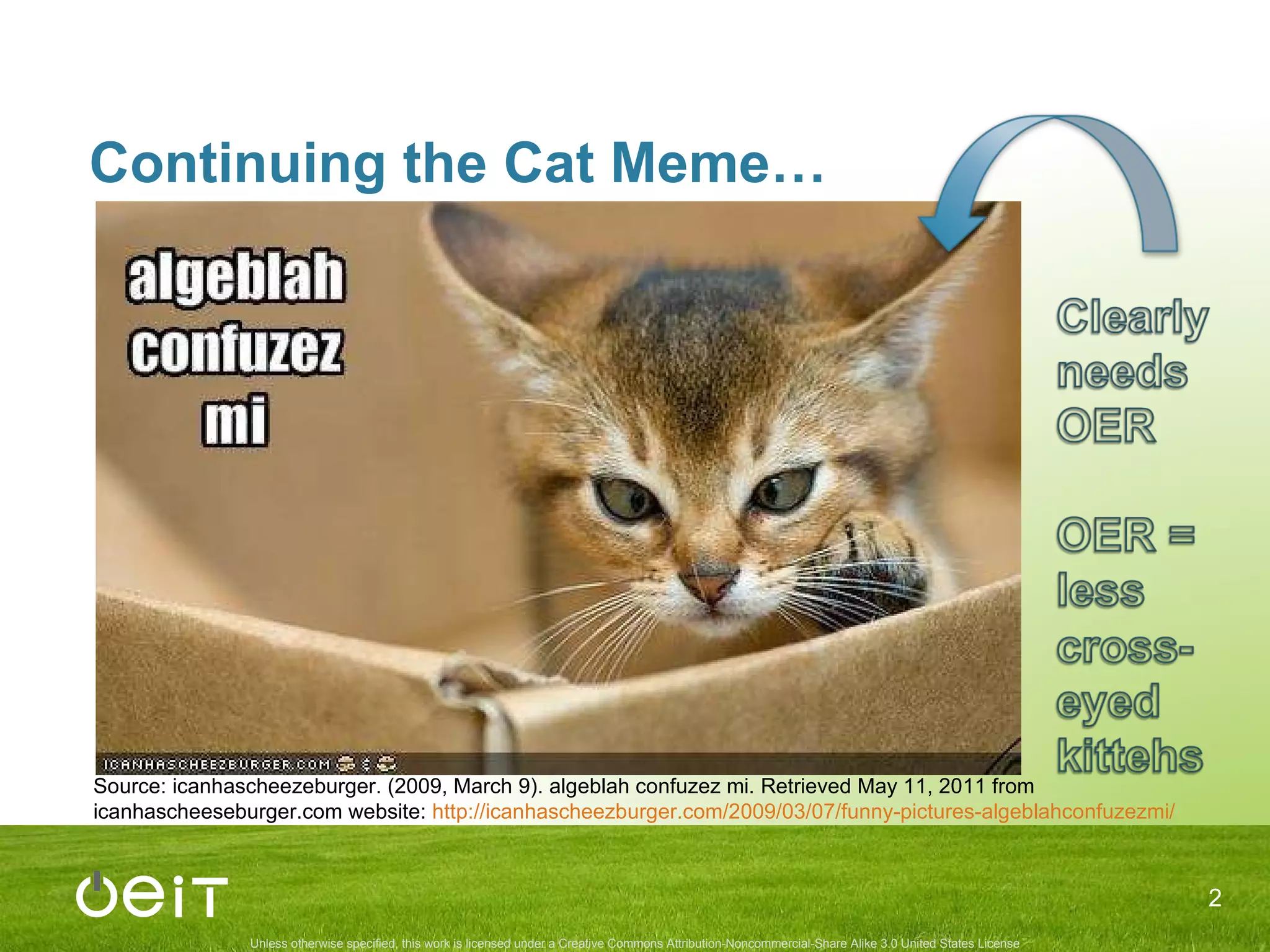
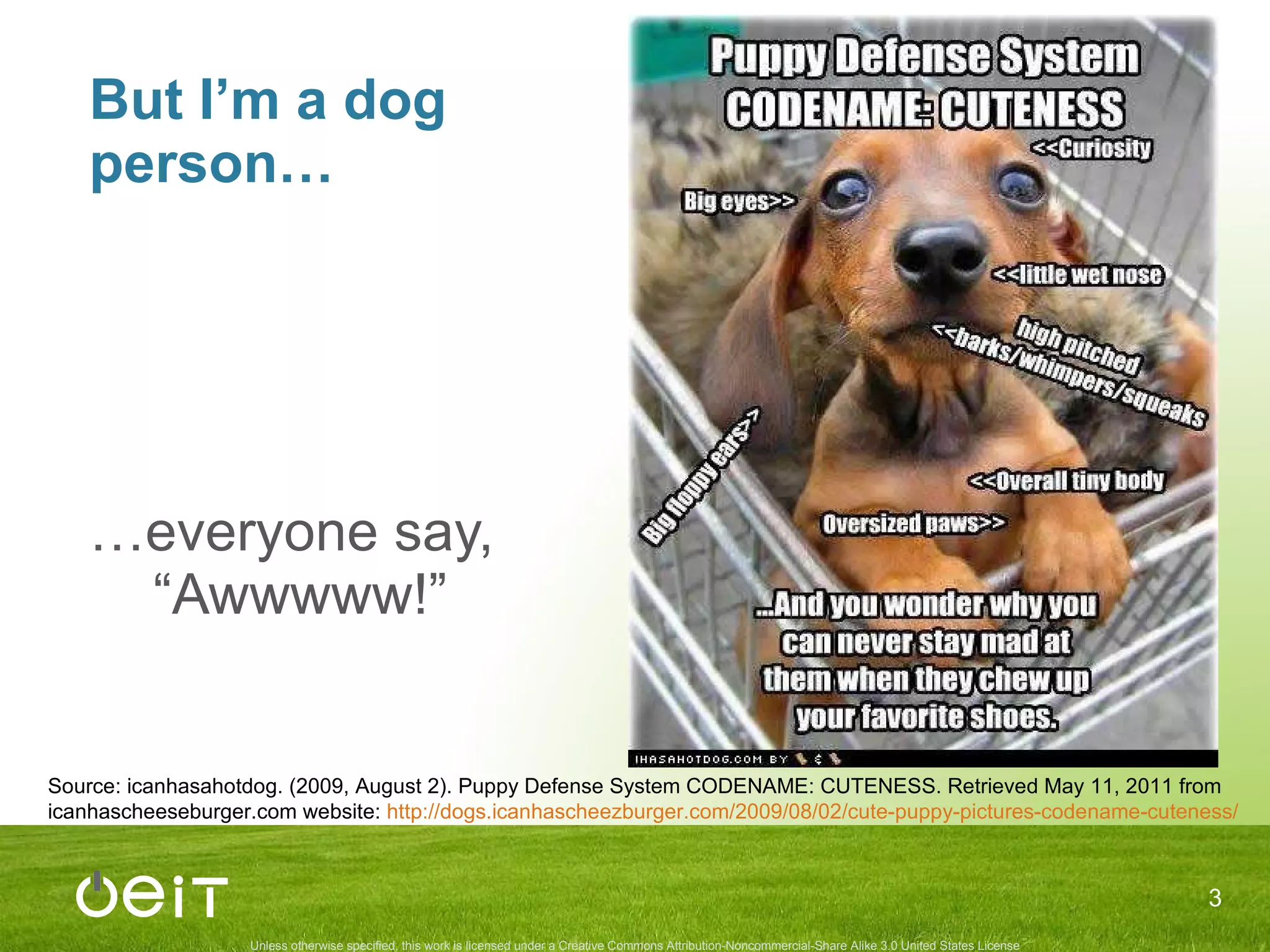
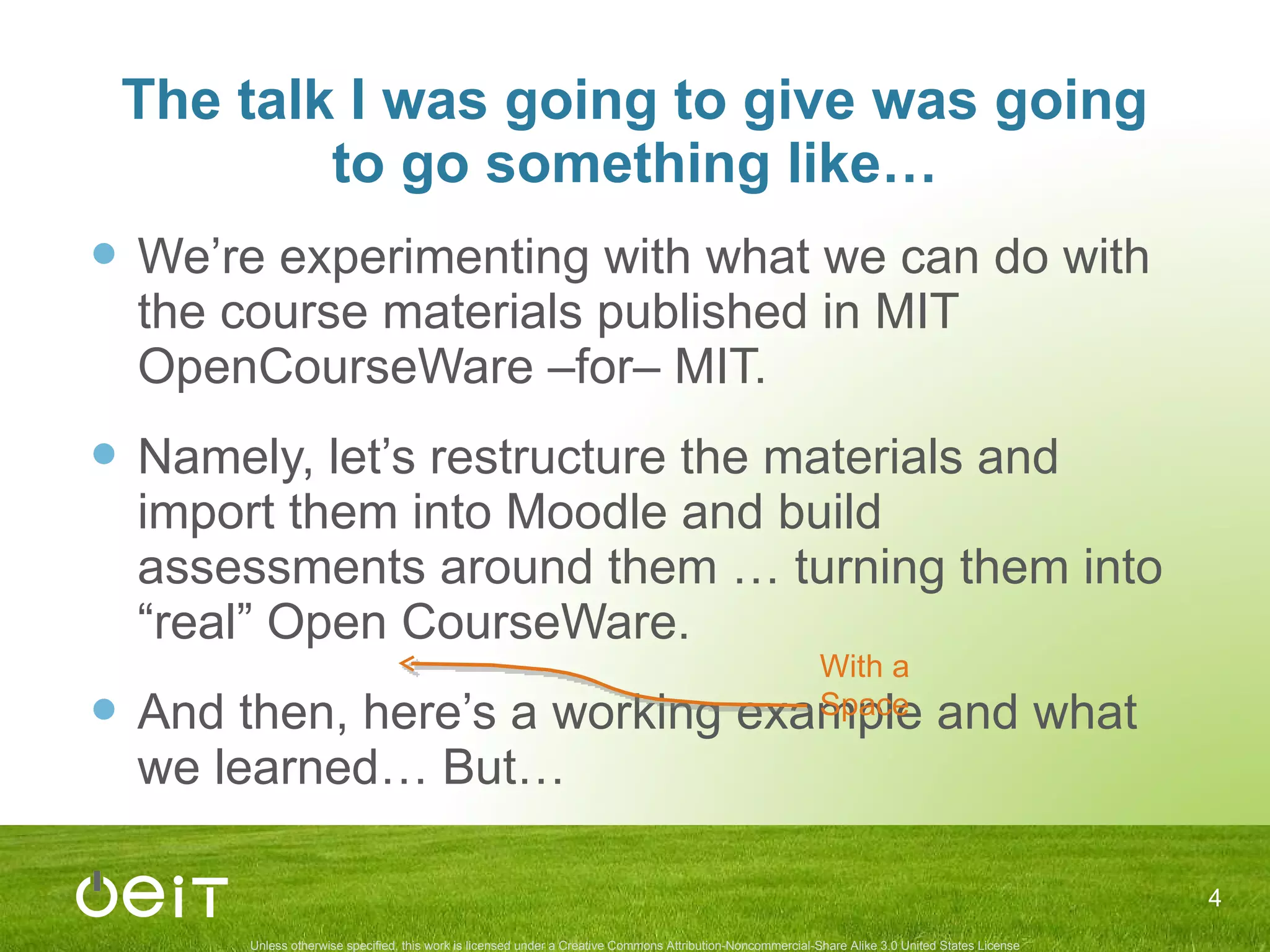
![Somewhere along the way I got sidetracked… This little conference in [the other] Cambridge… http ://bit.ly/ocwcglobal- wrapup … so, my apologies… Instead I’ll describe the motivation and process we will be exploring this summer.](https://image.slidesharecdn.com/oer11-opencourseware-muramatsu-final-110512045725-phpapp01/75/From-OpenCourseWare-to-Open-CourseWare-5-2048.jpg)
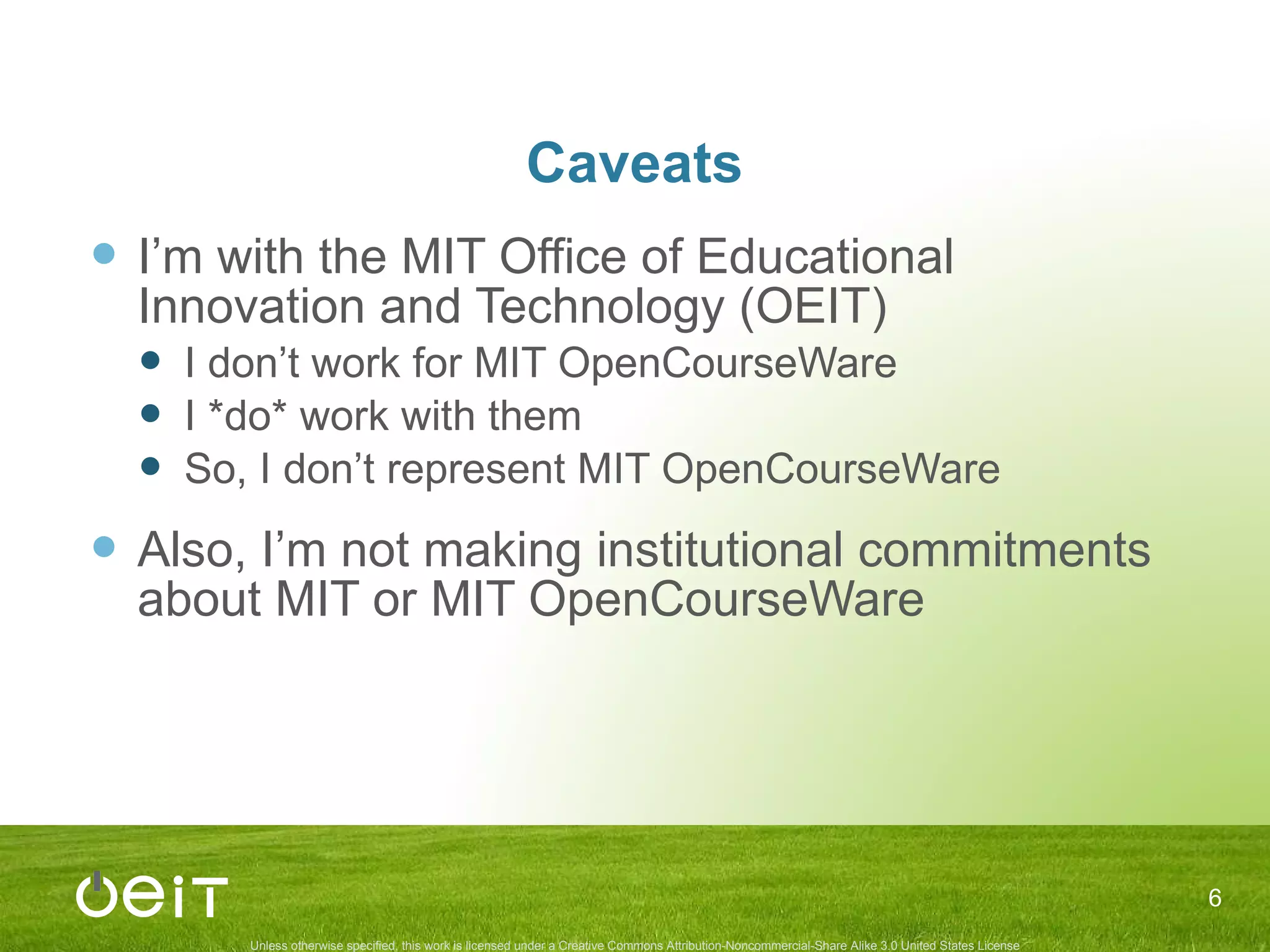
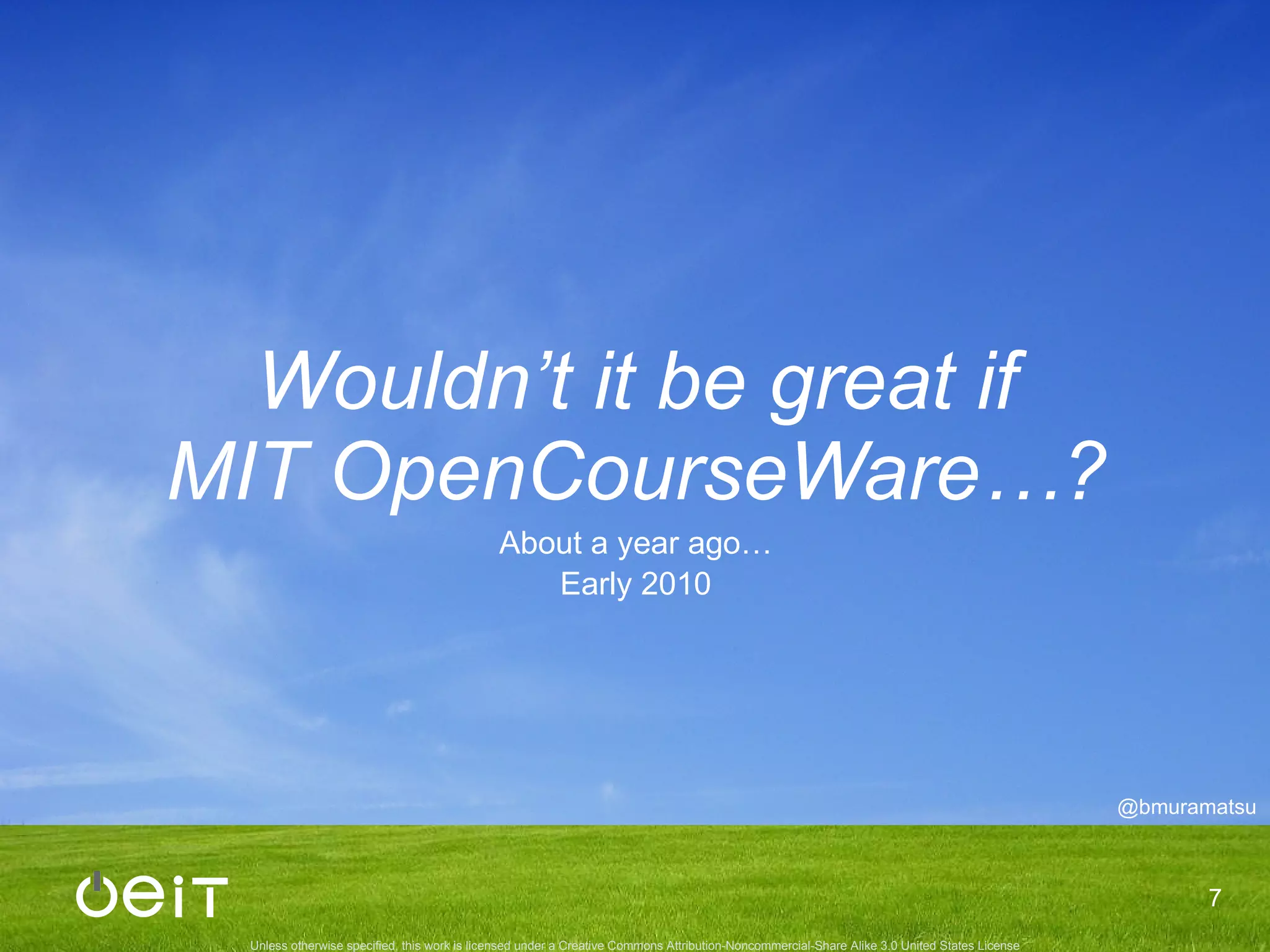
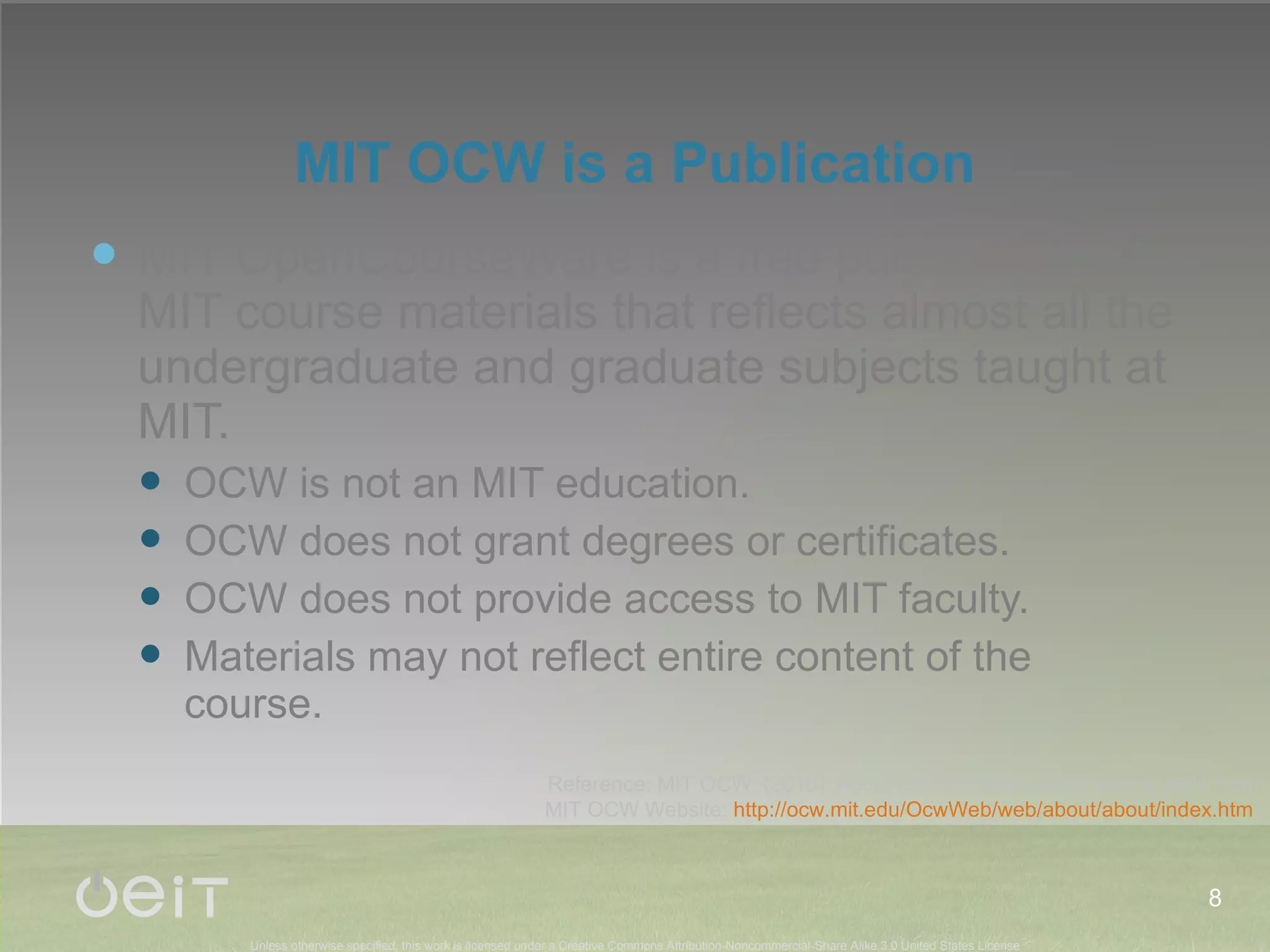

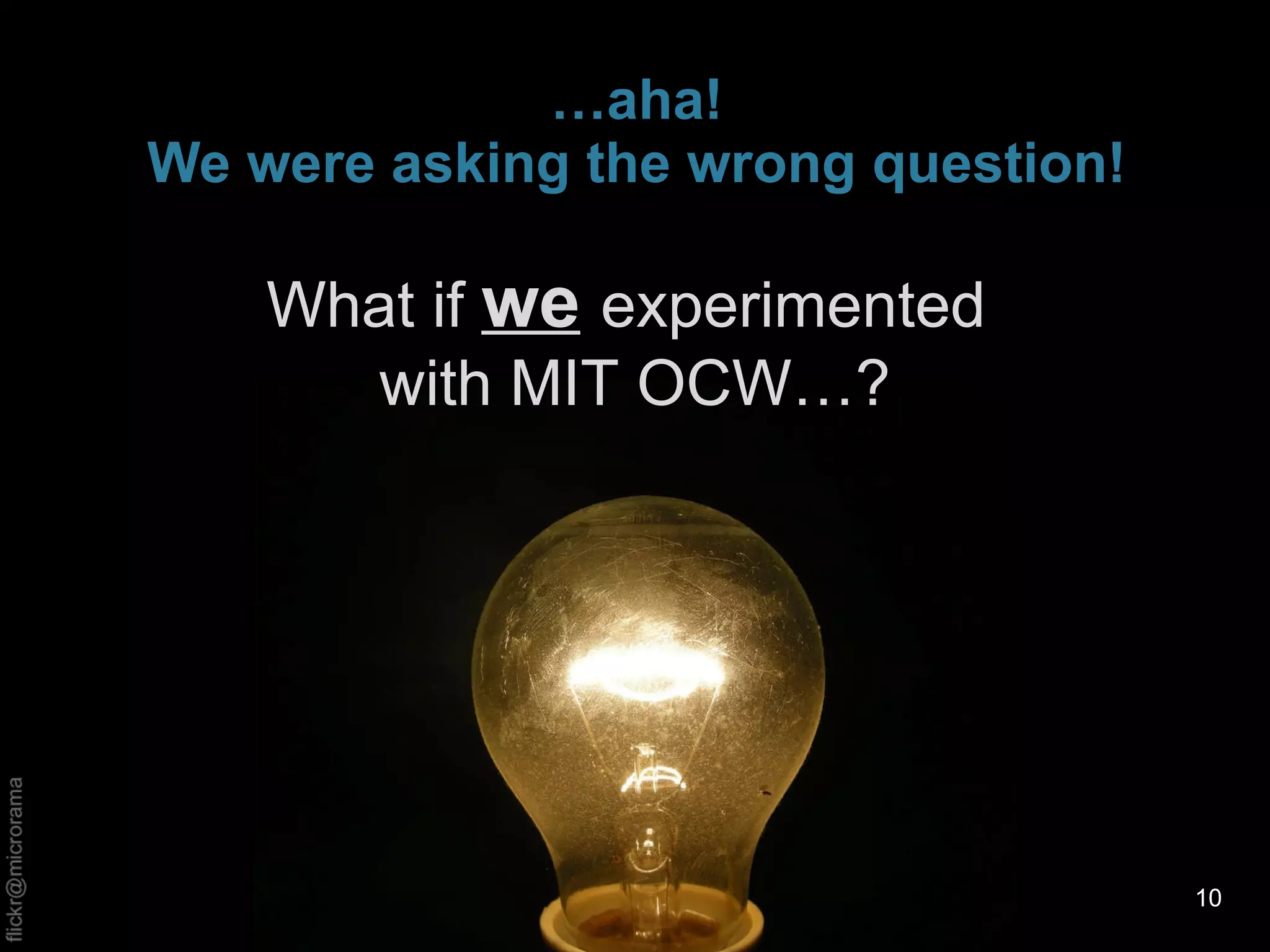
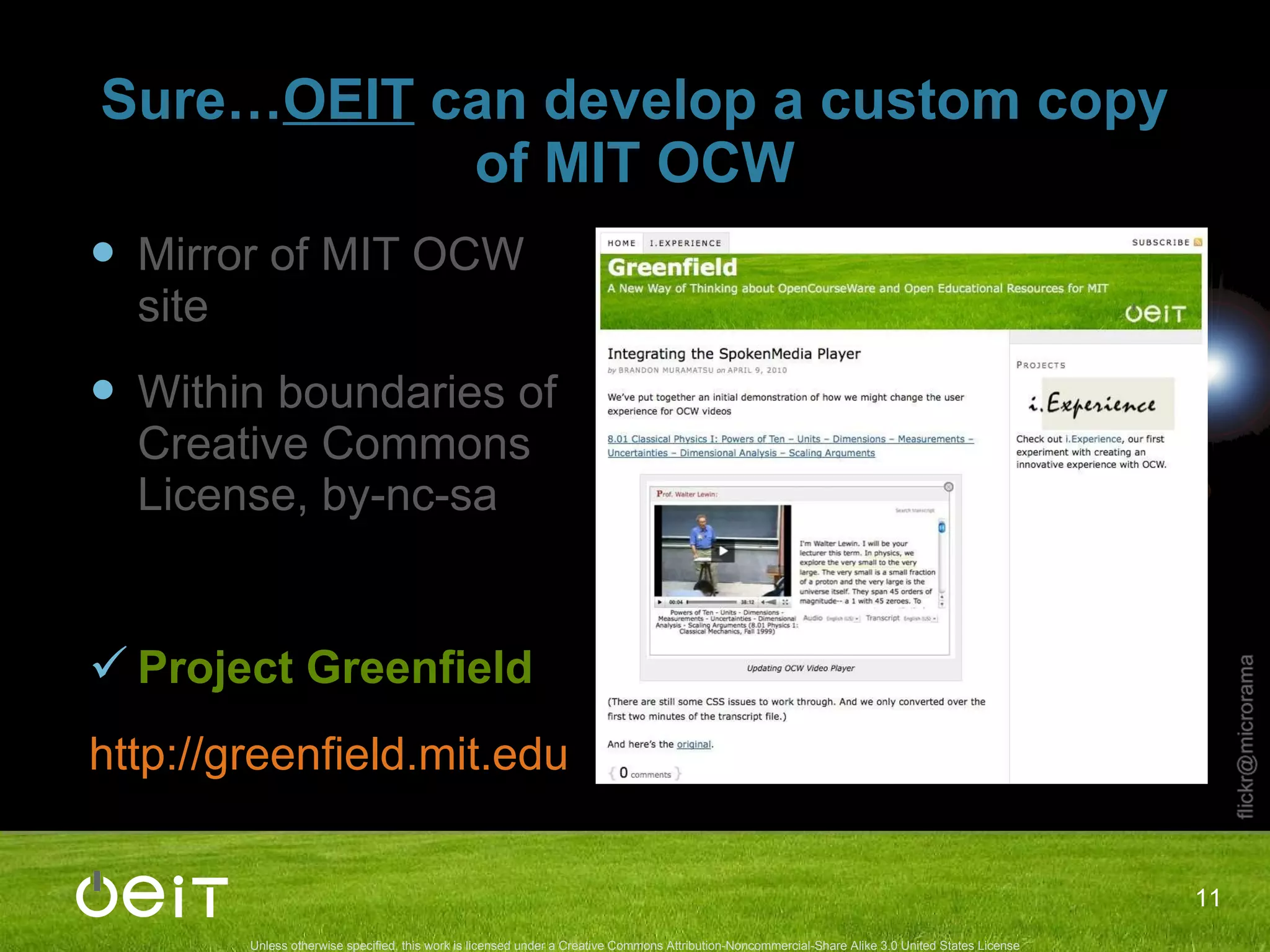

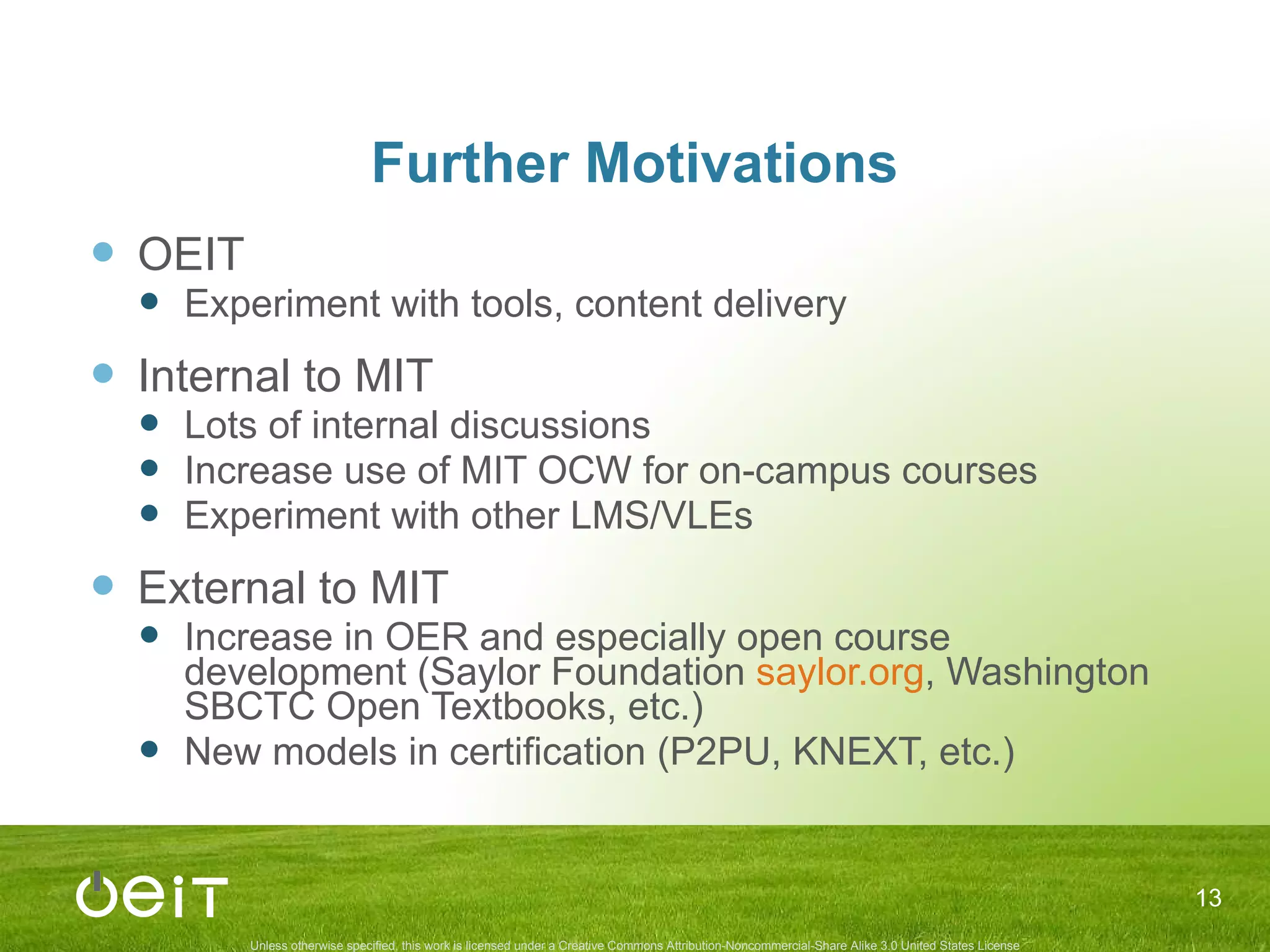
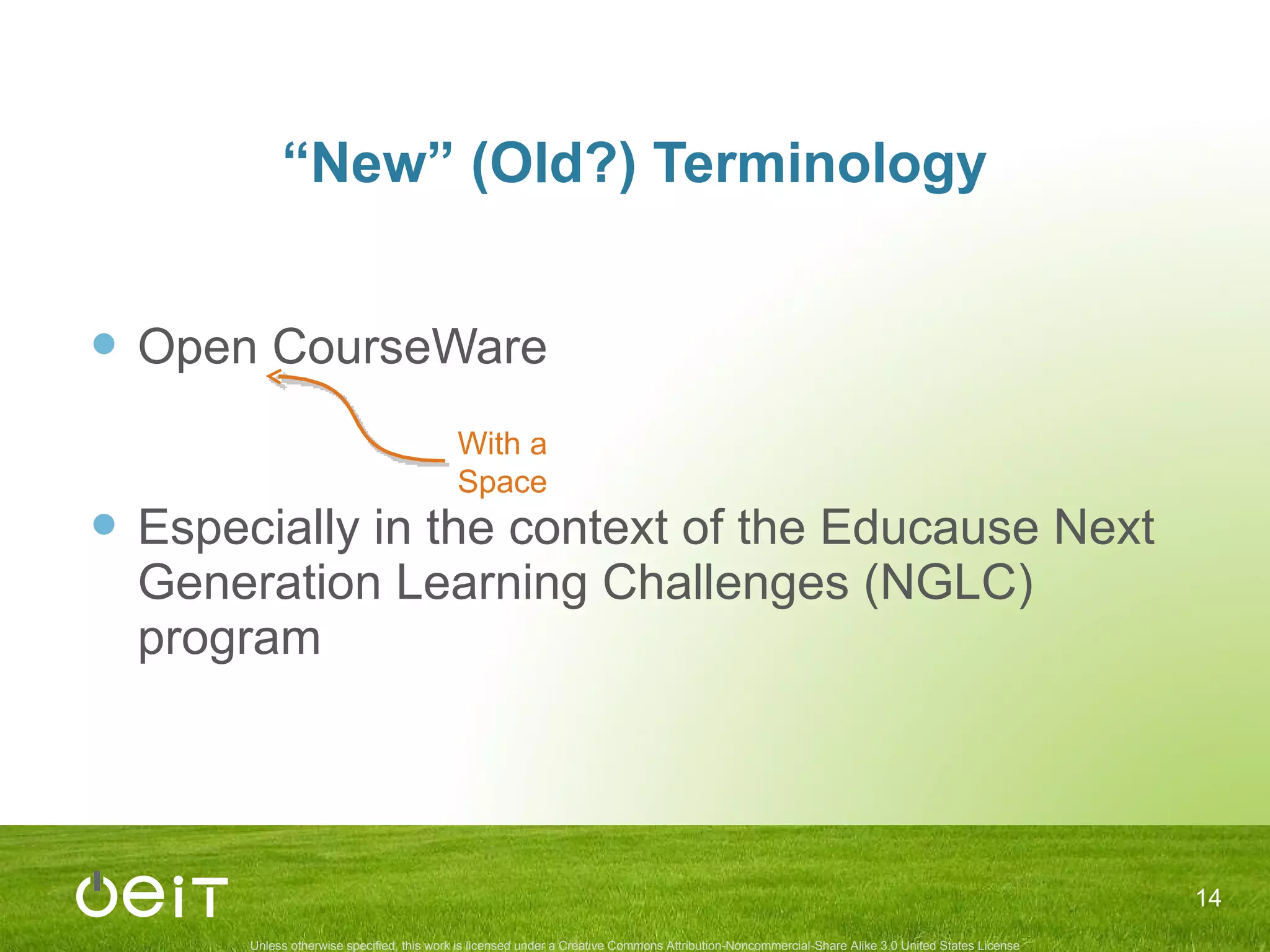
![Open CourseWare Should facilitate rich interactivity with instructor, peers, and content; Must be of the highest pedagogical and technical quality , integrating effective teaching strategies and interactive technologies ; Should include clear student learning objectives and assessment strategies that monitor and review student success; Must be standards-based to ensure they can be used broadly , yet be customizable to the needs of different learners/instructors (including persons with disabilities); [and] Should be openly licensed to allow institutions and faculty to tailor to local needs and improve the courseware over time. With a Space Reference: Next Generation Learning Challenges. (2011). Open Core CourseWare. Retrieved May 11, 2011 from Next Generation Learning Challenges Website: http://nextgenlearning.org/the-grants/wave-1-challenges/open-core-courseware/articles/open-core-courses](https://image.slidesharecdn.com/oer11-opencourseware-muramatsu-final-110512045725-phpapp01/75/From-OpenCourseWare-to-Open-CourseWare-15-2048.jpg)
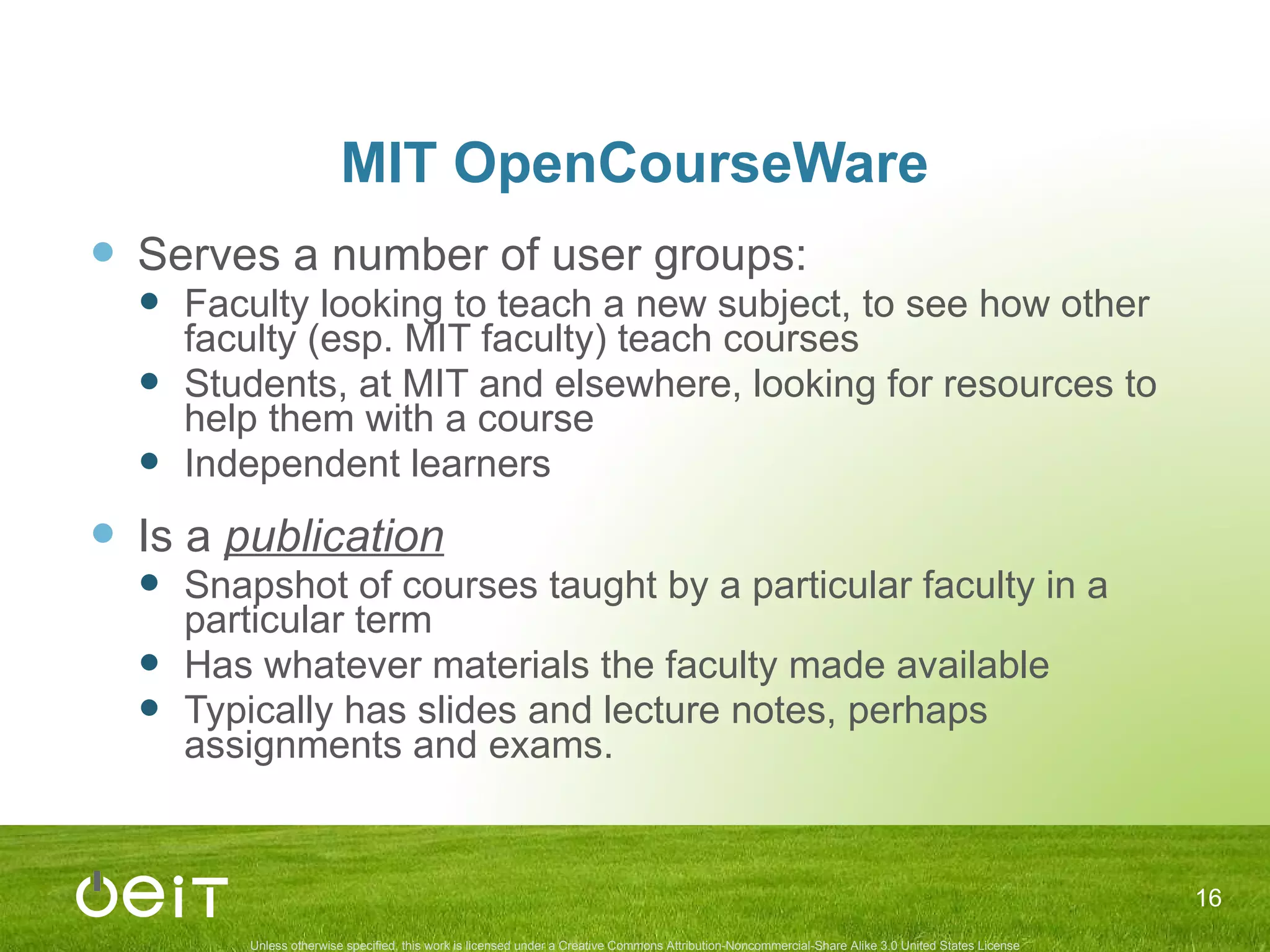

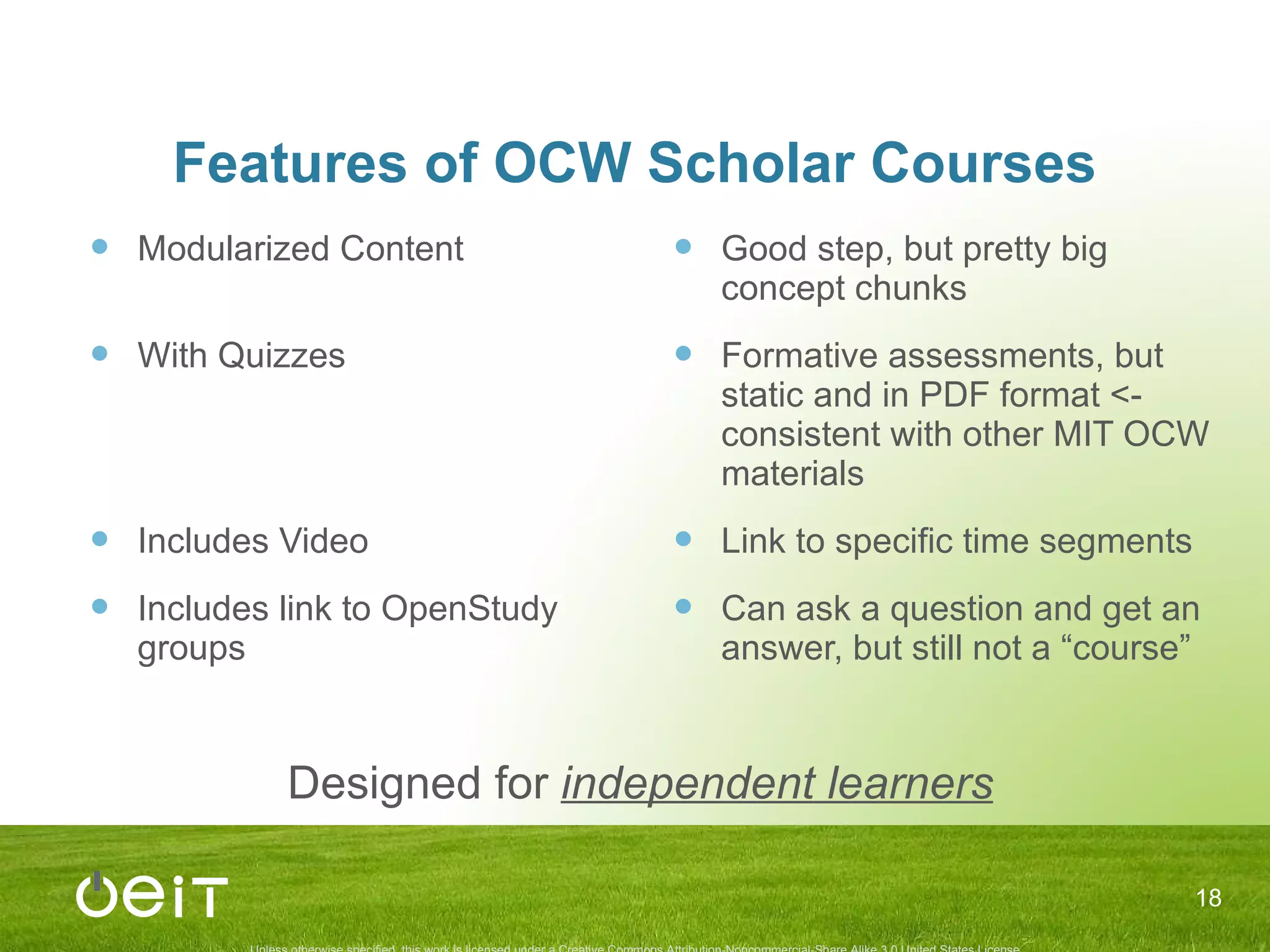
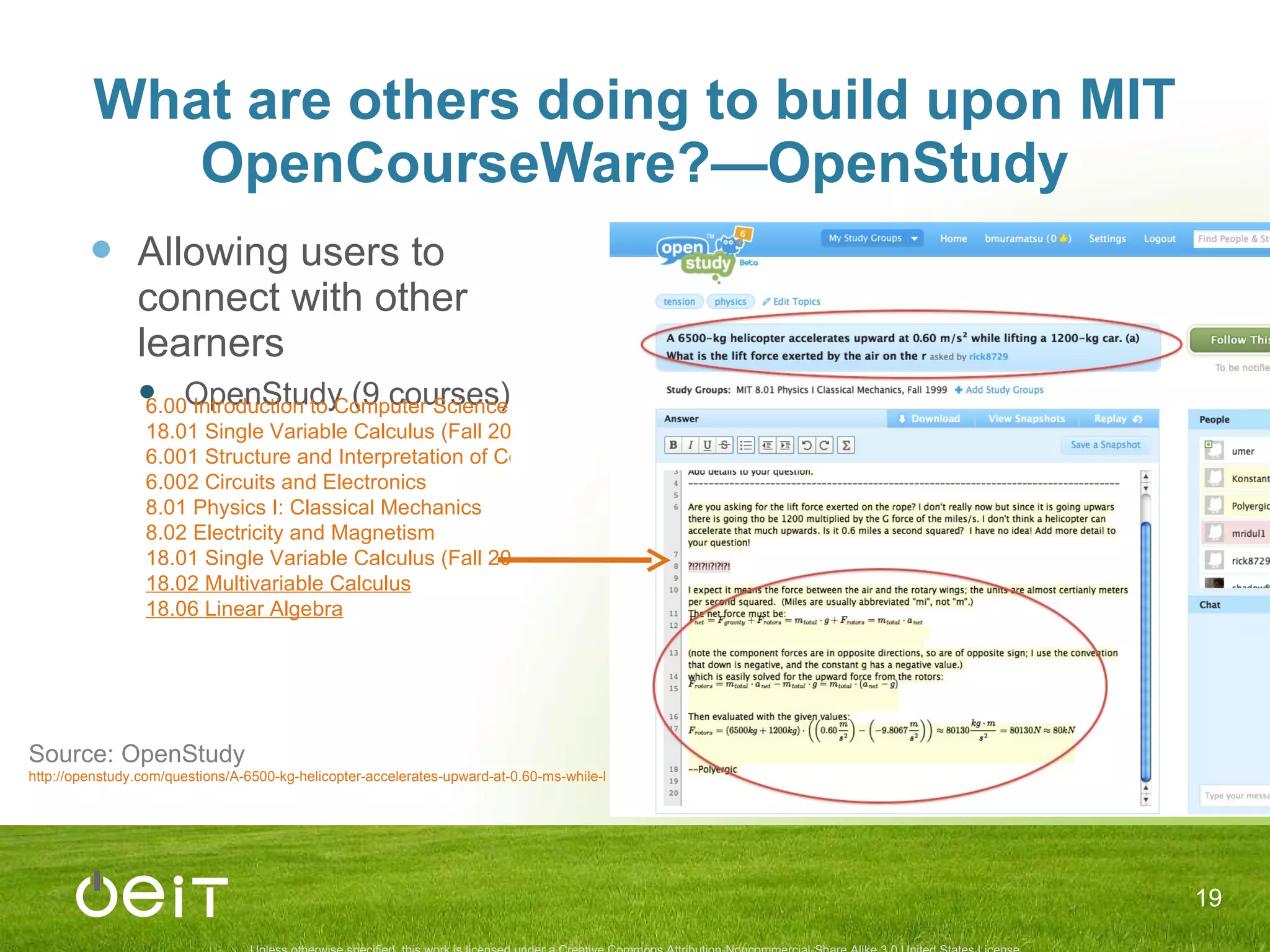
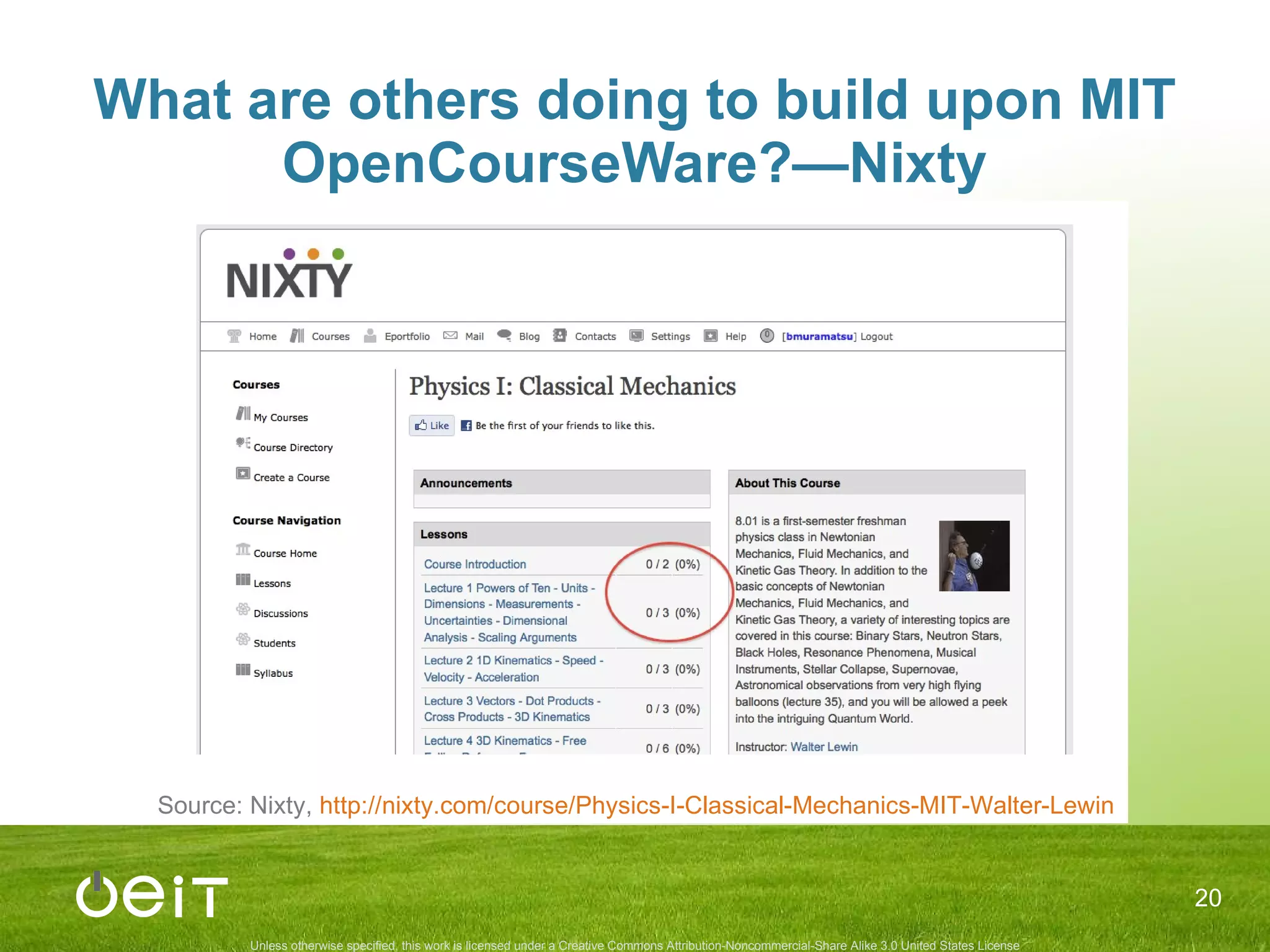
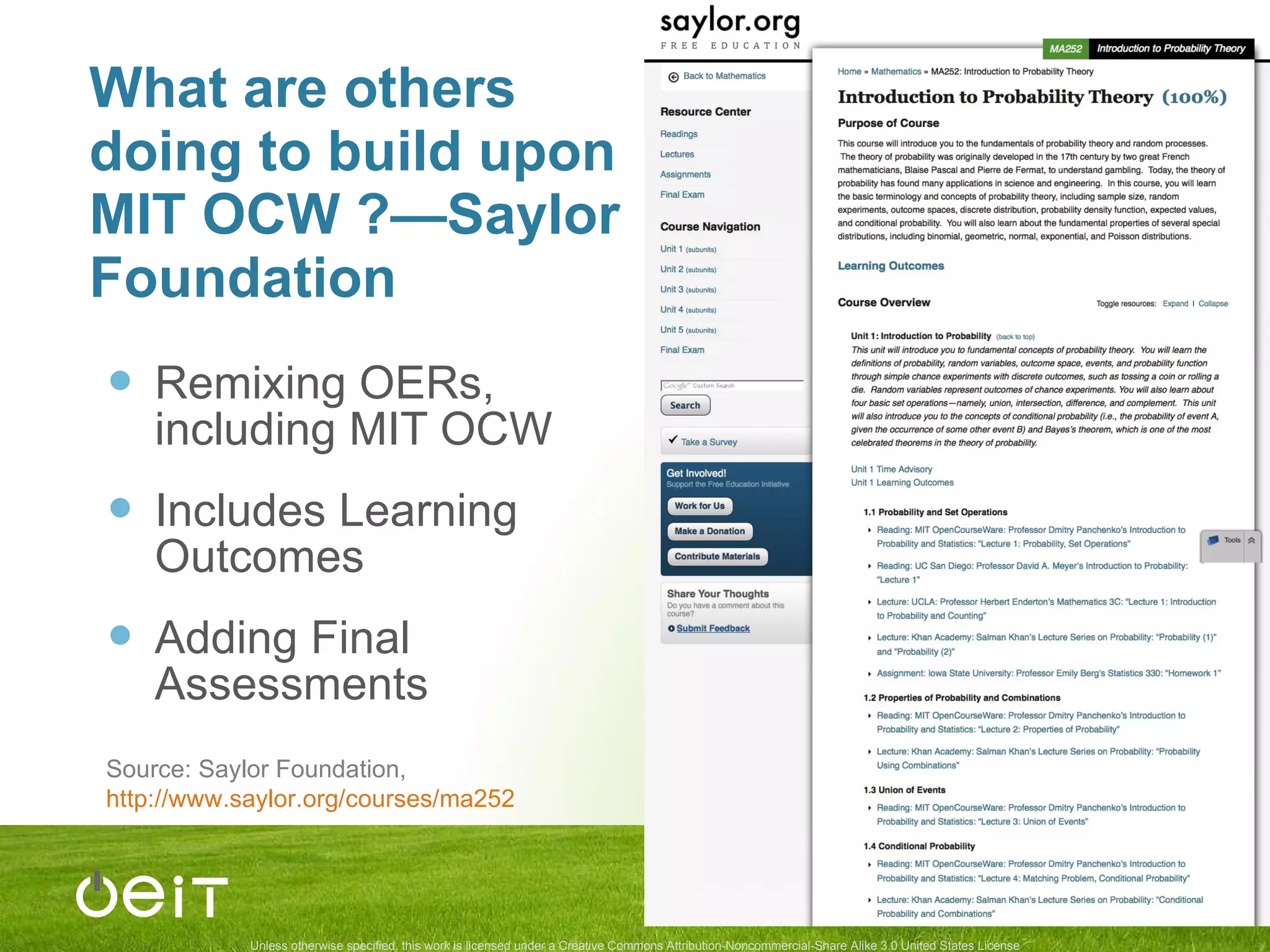
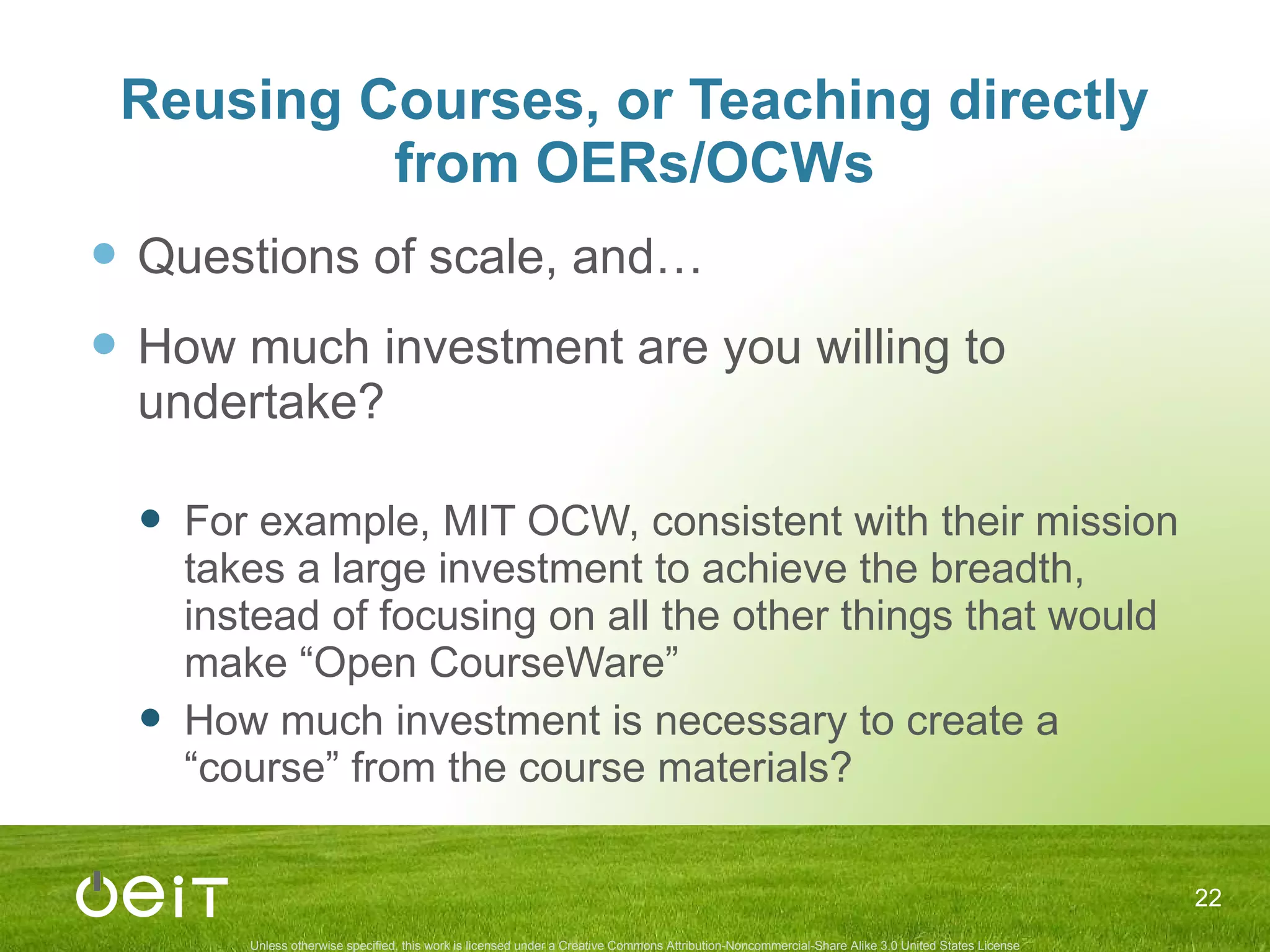
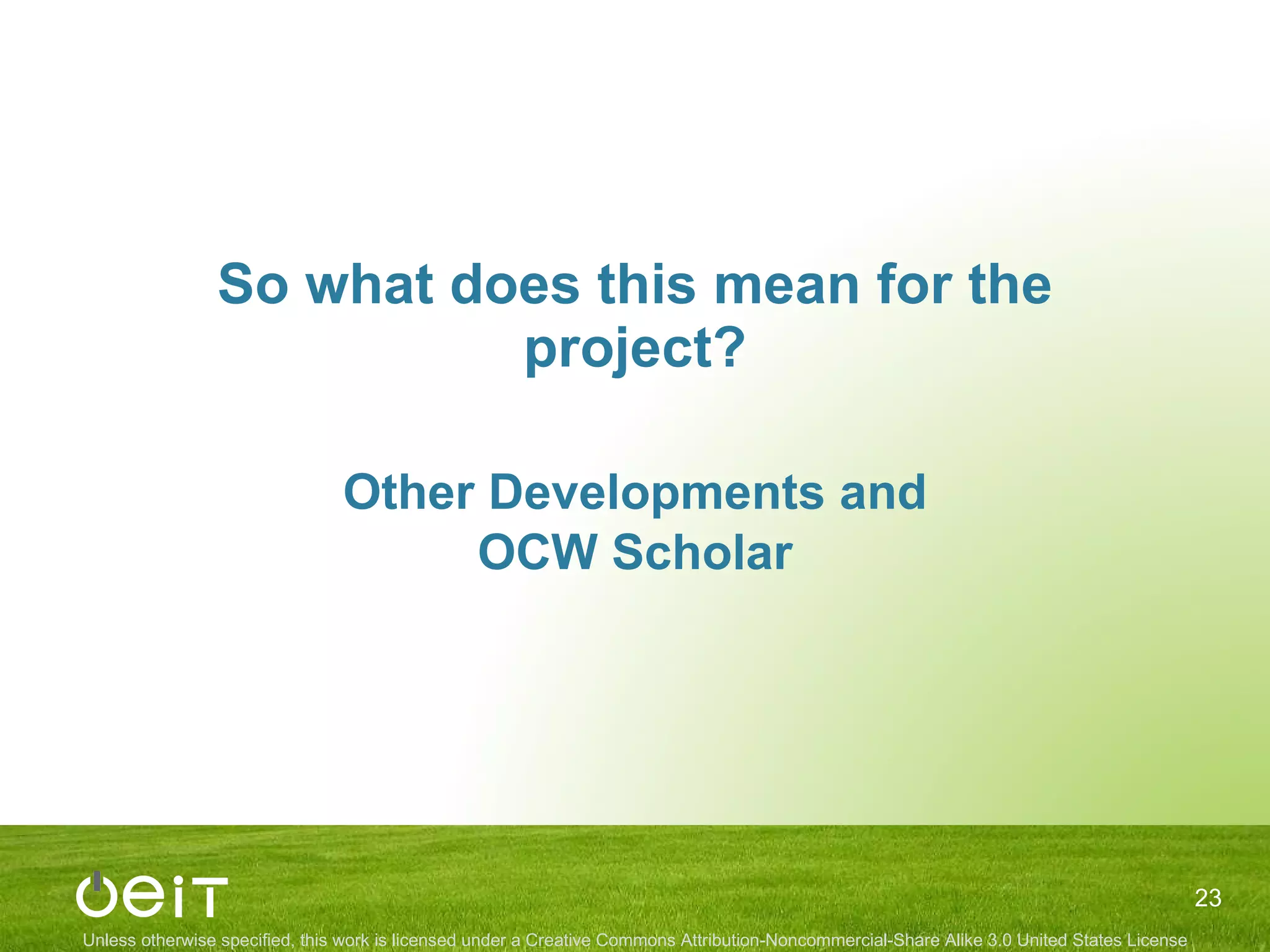

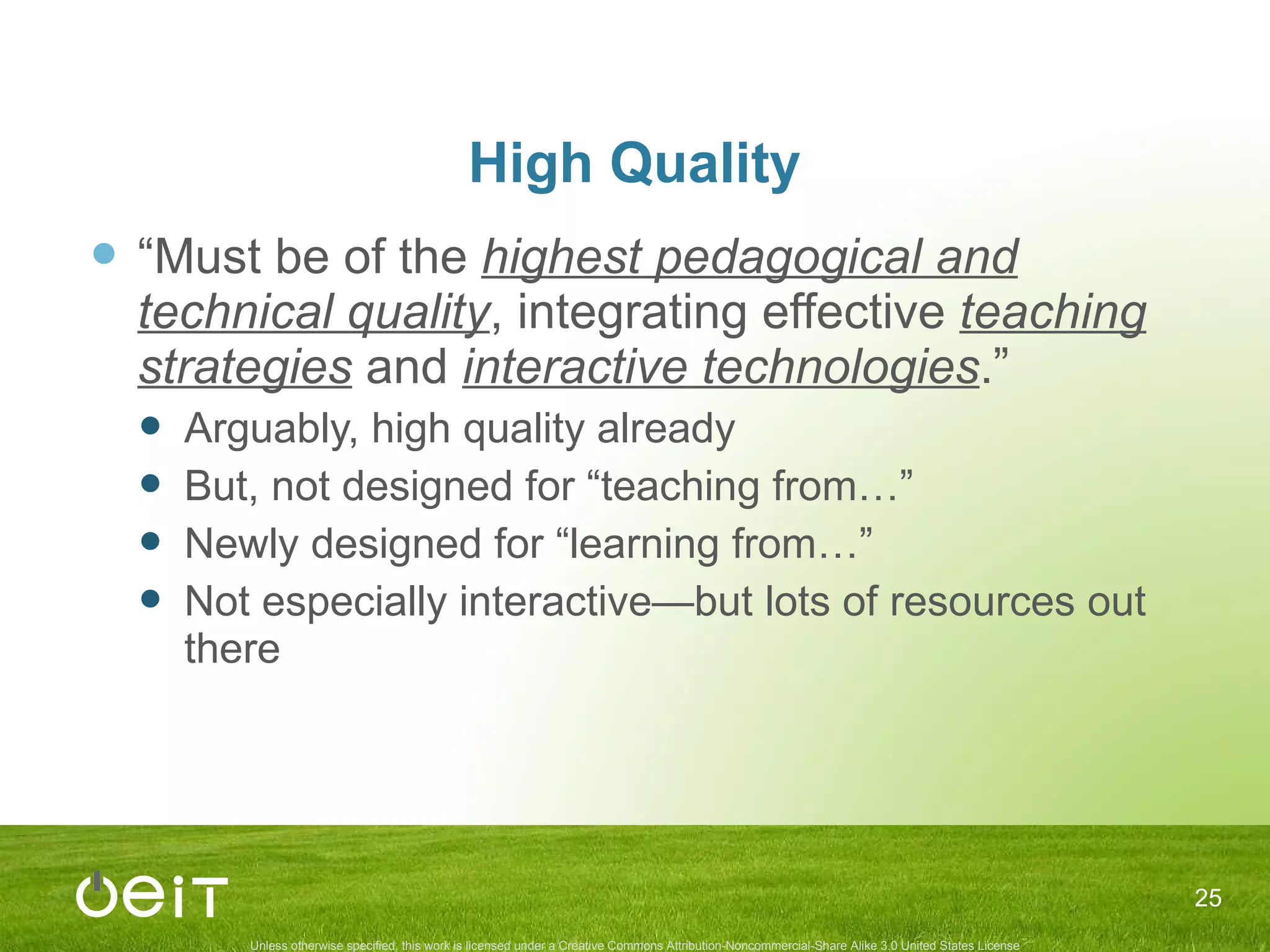

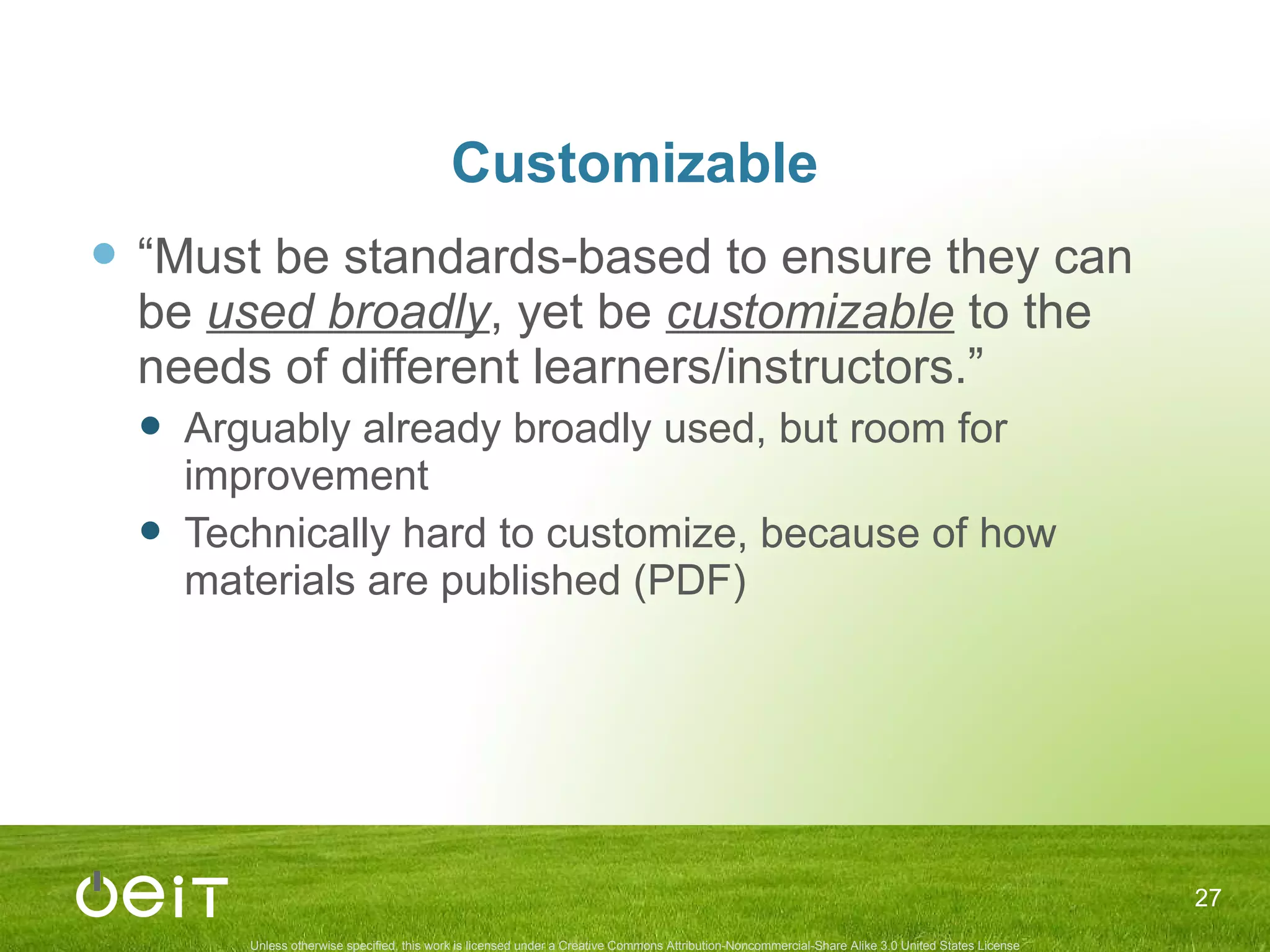
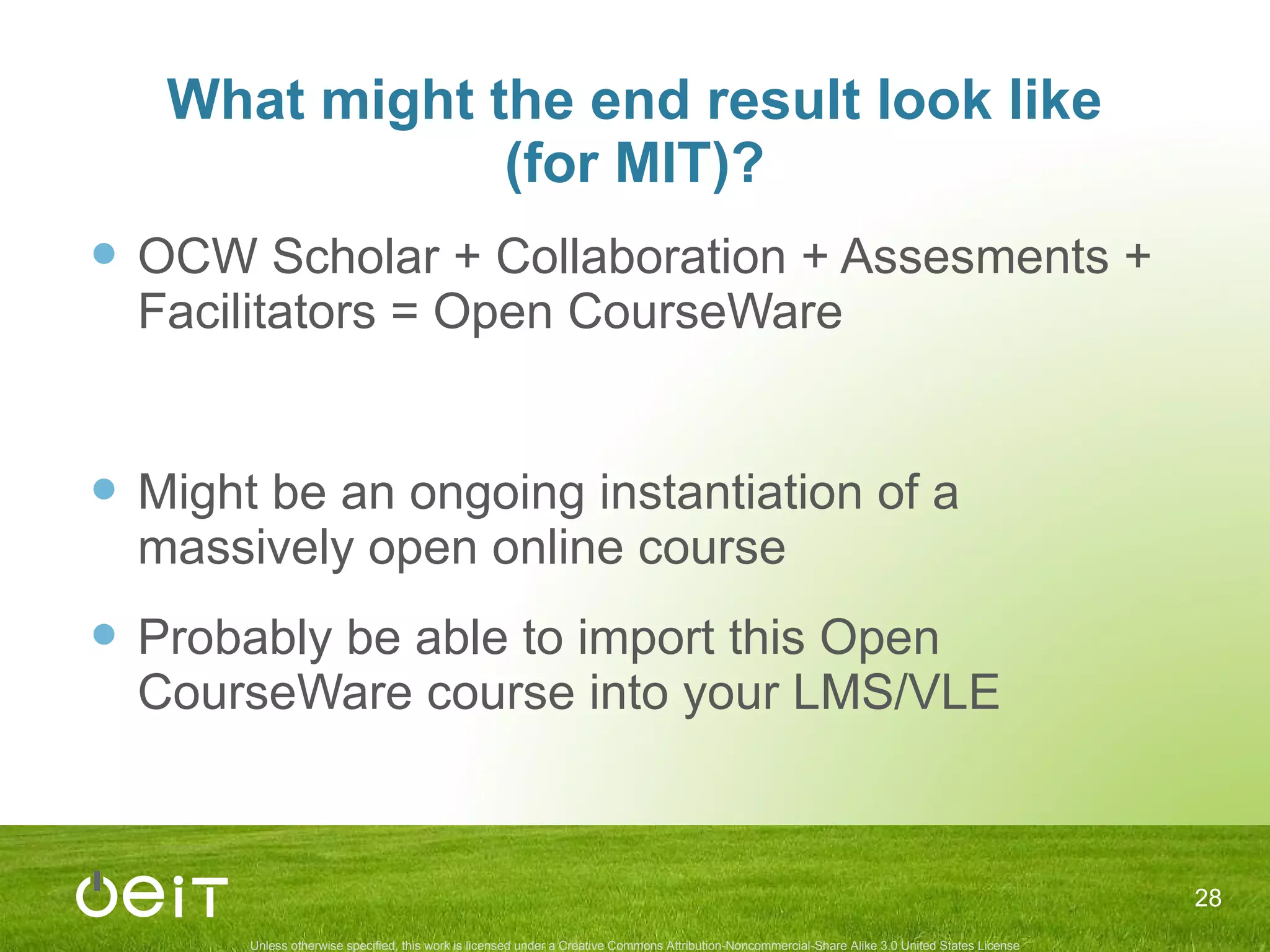
![Thanks! Brandon Muramatsu, [email_address] MIT Office of Educational Innovation and Technology Citation: Muramatsu, B., (2010). From OpenCourseWare to Open CourseWare. Presented at OER’11: Manchester, UK, May 12, 2011.](https://image.slidesharecdn.com/oer11-opencourseware-muramatsu-final-110512045725-phpapp01/75/From-OpenCourseWare-to-Open-CourseWare-29-2048.jpg)